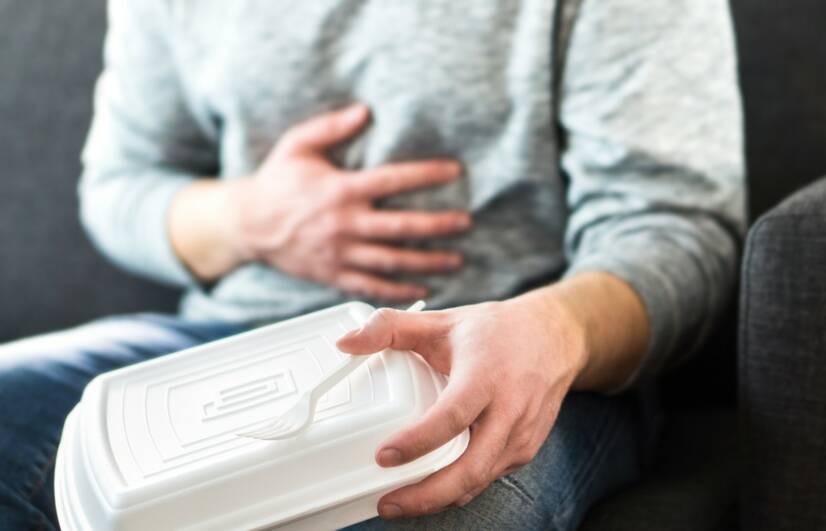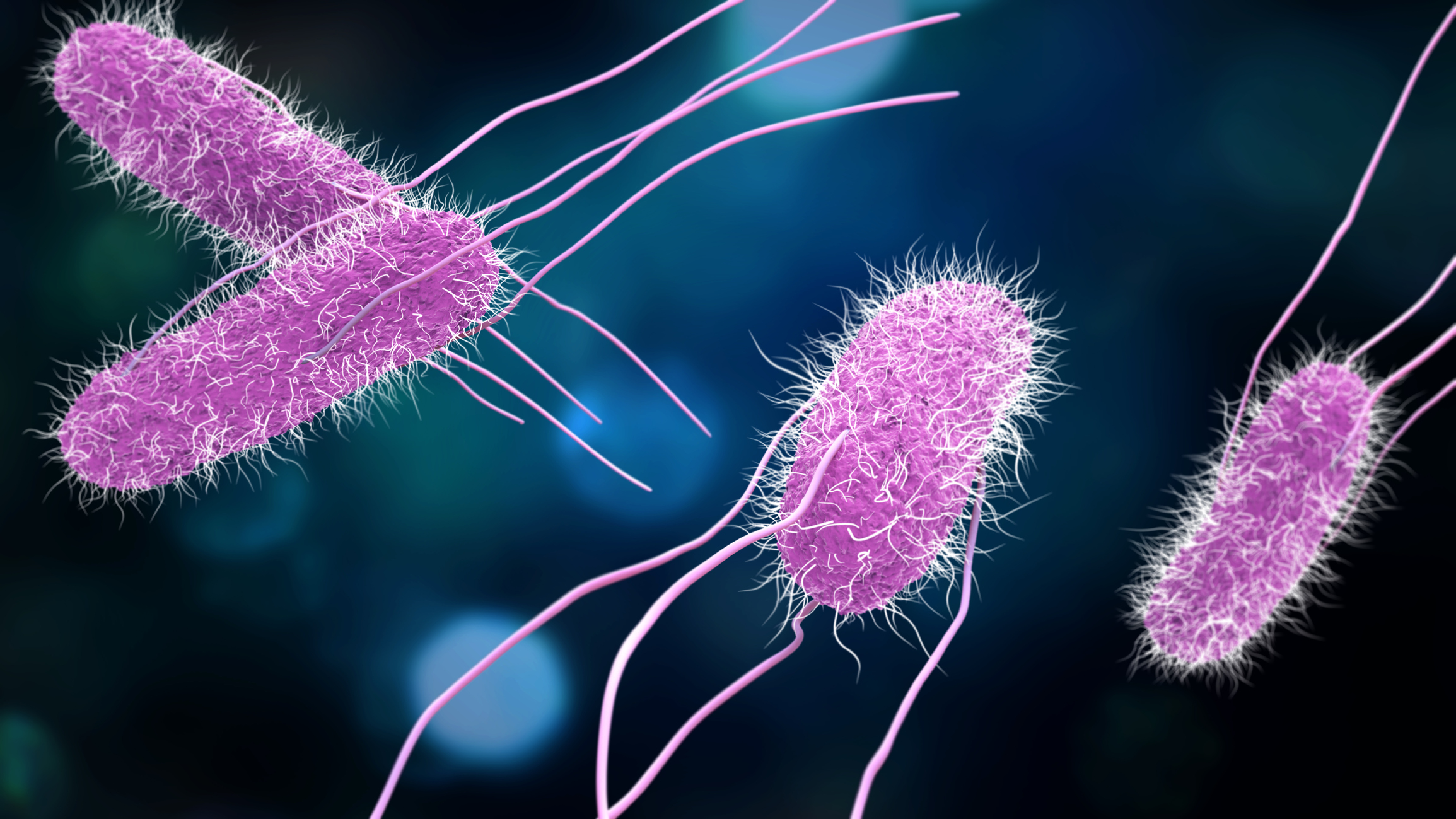- emedicine.medscape.com - Salmonella Infection (Salmonellosis), Alena Klochko, MD Infectious Disease Physician, Orlando Health, Florida
- cdc.gov - What are Salmonella?
- webmd.com - Salmonella (Salmonellosis)
- mayoclinic.org - Salmonella infection
- who.int - Salmonella (non-typhoidal)
Salmonellosis: Causes, Transmission, Symptoms

Salmonellosis affects the digestive tract. It is one of the most common diarrheal diseases of both children and adults.
Most common symptoms
- Malaise
- Abdominal Pain
- Fever
- Increased body temperature
- Cramps in the abdomen
- Nausea
- Diarrhoea
- Indigestion
- Low blood pressure
- Dry mouth
- Stool with blood - blood in the stool
- Vomiting
- Liver enlargement
Characteristics
Salmonellosis is a common bacterial disease that affects the digestive tract. It is one of the most common diarrhoeal diseases affecting both children and adults. It is one of the top four causes of diarrheal diseases.
Salmonella is named after Daniel E. Salmon, the American veterinarian who first isolated salmonella from pigs with swine cholera in 1884.
Salmonellosis is caused by all non-typhoidal serotypes of the genus Salmonella, except S. typhi and Salmonella paratyphi A, B and C. Salmonella enteritidis is the most common disease.
Salmonella = Salmonella infection = Salmonella enteritis.
Risk factors for salmonella
Children, especially under the age of 5, are more likely than adults to be affected by salmonella.
The elderly and people with a weakened immune system are also more likely to be infected.
Other risk factors include:
- travelling abroad - Salmonella is more common in places with poor hygiene.
- taking certain medications
- cancer drugs or steroids can weaken the immune system and make it more susceptible to infection,
- antacids reduce the amount of acid in the stomach, making it easier for salmonella to survive,
- antibiotics can kill the "good" bacteria in the body and make the infection harder to fight.
- inflammatory bowel disease - can damage the lining of the intestines, making it easier for salmonella to attach themselves there.
Common search phrases with regards to the topic at hand:
Salmonella enteritis, diarrhea, abdominal pain, temperature, raw eggs.

Causes
Salmonella is one of the so-called anthropozoonoses (diseases that are transmitted from animals to humans).
Salmonella usually lives in the intestines of animals and humans and is excreted in faeces. Humans are most commonly infected through contaminated water or food. The bacteria are able to multiply at low temperatures (in the refrigerator) and are destroyed by prolonged exposure to temperatures above 70°C.
Sources of foodborne diseases:
- raw and uncooked meat, including chicken, turkey, duck, beef, veal and pork
- seafood
- unpasteurised milk and other dairy products, including soft cheeses, ice cream and yoghurt
- raw or undercooked eggs (scrambled eggs, ox eye, fried sunny-side-up egg, soft-boiled eggs), mayonnaise products, desserts
- processed foods such as chicken nuggets and nut butters

Salmonella can be spread by food handlers who do not wash their hands and/or the surfaces and utensils/appliances they use during food preparation.
Salmonella can also be transmitted from animals to humans if a person who is in direct contact with certain animals, such as poultry or reptiles, does not wash their hands after contact with the animal and subsequently consumes the food.
Pets can spread the bacteria in the home environment, too, if they eat food contaminated with salmonella.
Symptoms
The incubation period of infection typically lasts between 6 and 72 hours.
The disease usually lasts four to seven days, and most patients recover without treatment.
Most people with salmonellosis have diarrhea, fever, and abdominal cramps.

More serious signs and symptoms of salmonellosis include:
- high fever,
- headache,
- fatigue,
- rashes,
- blood in the urine or stool
- very rarely, death.
About 5% of patients with salmonellosis develop bacteraemia (bacteria present in the blood), and of the patients with bacteraemia, about 40% develop extraintestinal (outside of the intestines) local infection (in the spinal cord, bone marrow, blood vessels).
Children under 5 years of age, the elderly andpeople with a compromised immune system areat risk for severe Salmonella infection.
When to see a doctor?
- if the diarrhoea persists even after a week of feeling ill
- young children, the elderly and people with a weakened immune system should see a doctor if they experience any of the following symptoms for more than several days:
- bloody stool,
- persistent fever,
- dehydration (this manifests itself as urination in small amounts, dry mouth, sunken eyes)
Complications of salmonellosis
Most people with diarrhoea caused by salmonella make a full recovery, although some people's bowel habit (frequency and consistency of bowel movement) may not return to normal for several months.
Patients with salmonellosis are at risk of dehydration if the fluids they lose due to diarrhoea are inadequately replaced.
Some people with Salmonella infection develop joint pain after the infection is over. The resulting condition is called reactive arthritis. Reactive arthritis can last for months or years and is difficult to treat. Some people with reactive arthritis develop eye irritation and pain when urinating.
About 40% of infectious aortitis (inflammation of the aortic wall) is caused by Salmonella. It is characterized by high morbidity and mortality (i.e. rate fo disease and rate of death).
Diagnostics
How is salmonella diagnosed?
- taking a medical history (eating suspicious food)
- typical clinical picture
- stool collection followed by stool culture, blood is also taken for bacteraemia
Preventing salmonellosis
The WHO (World Health Organization) has issued ten golden rules for the prevention of salmonellosis:
- Do not consume unknown risky foods.
- Observe a safe cooking time for risk foods (eggs) of at least 12 minutes at 100 °C, fry omelettes on both sides, do not use uncooked egg whites and yolks in creams and ice creams.
- Do not refreeze fully or partially defrosted food.
- When preparing mayonnaise dishes, use only store-bought mayonnaise that is protected against salmonellosis by a pasteurisation process.
- Eat immediately after cooking, otherwise store at temperatures above 60 °C or in a refrigerator below 10 °C.
- Maintain good hand hygiene when preparing food, especially when preparing infant food.
- Avoid contact between raw and cooked edibles. Do not use poultry cutting mats for cutting sausage, vegetables, fruit.
- Keep all kitchen equipment completely clean.
- Protect food from insects and rodents.
- Use only drinking water.

How to support a loved one affected by salmonellosis
Disinfection - use chlorine disinfectants to wash all at-risk surfaces in the home every day - toilet seat, door handles, faucets.
Better hand hygiene - essential to prevent transmission of infection.
Use a separate soap and towel for the infected individual.
If another member of the family falls ill, see your GP. Since salmonellosis is a reportable disease, it needs to be reported to a public health institution near you.
If strict precautions in the family are adhered to, infection due to direct contact transmission is minimal.
How it is treated: Salmonellosis
Treatment, medication, diet, hydrating
Show moreSalmonella pathogenesis
Salmonellosis is treated by
Other names
Interesting resources










